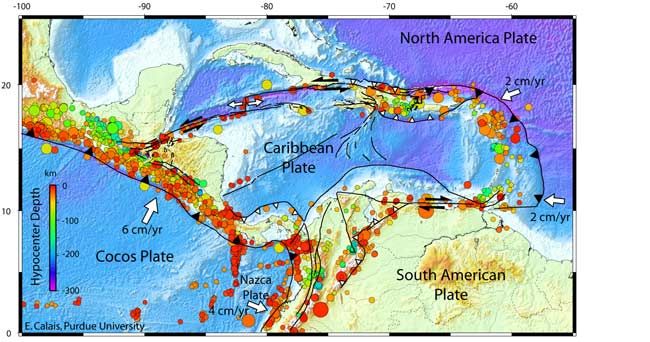
Another Huge Quake May Hit Haiti, Study Finds

Haiti is at risk for yet another massive earthquake, according to several studies pointing to a newfound fault as the culprit for the Jan. 12 magnitude-7.0 earthquake that devastated the counry.
The well-known Enriquillo-Plantain Garden fault was blamed shortly after the earthquake rocked Port-au-Prince, killing more than 200,000 people and leaving more than 1.5 million homeless. A new study in the journal Nature Geoscience, however, backs up other recent studies that pin the blame on a previously unknown fault now called the Léogâne fault. This fault, the study says, was responsible for about 85 percent of the energy released during the earthquake.
The takeaway from these findings for those in the region: "Adapt and prepare," said Eric Calais, a geophysicist from Purdue University in West Lafayette, Ind., and co-author on the study identifying the unmapped fault. "It does not matter when the next earthquake happens if one is prepared."
Calais said that involves taking measures such as building according to the region's hazard level, educating the population and authorities, using proper urban planning and making sure every reconstruction project meets earthquake safety requirements.
Without a trace
When the Léogâne fault ruptured, it did not crack the Earth's surface, as some faults do, but it did trigger underground landslides that set off tsunami waves along the coast, according to another recent study.
Earthquakes typically occur along faults, which are breaks in the rocky plates of the Earth's crust. These faults accumulate strain over the years as two plates butt heads.
Sign up for the Live Science daily newsletter now
Get the world’s most fascinating discoveries delivered straight to your inbox.
Calais, who was not involved with this study, told OurAmazingPlanet that "it is not unusual for earthquakes that occur in the crust to rupture only at depth," and pointed to the Loma Prieta quake that hit San Francisco in 1989 (the famous World Series Earthquake) and the Northridge quake in 1994 near Los Angeles as other examples.
Pent up stress
Even though the fault responsible for the quake was a surprise, the Haitian earthquake was not entirely unexpected, given the seismic activity in the region over the past two-and-a-half centuries. Unlike the 2010 Haiti earthquake, an eighteenth-century precursor event ruptured the surface near the main fault system implicated in the earthquake, another recent study revealed.
Nine streams whose beds had been offset, probably by only one of the two large earthquakes that occurred on the same fault system in 1751 and 1770, were discovered, implying that these temblors ruptured the land surface. The devastating 2010 quake, however, did not leave a surface trace, which suggests that not all the strain accumulated over the past two-and-a-half centuries was released during the event in January.
"Much work remains to be done to identify and quantify potential earthquake sources in and around Hispaniola, an island where vulnerability to earthquake shaking will probably remain high in the near future," wrote Calais.
The studies are a part of a special series on the Haiti earthquake, and are detailed in the Oct. 24 online edition of the journal Nature Geoscience.
- 7 Ways the Earth Changes in the Blink of an Eye
- Surprises Revealed in Wake of Massive Haiti Quake
- Gallery: Deadly Earthquakes
This article was provided by OurAmazingPlanet, a sister site to LiveScience.












